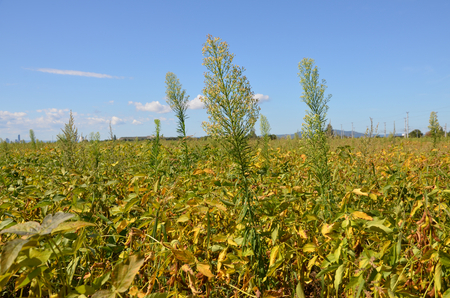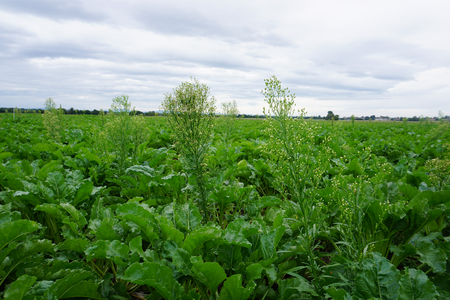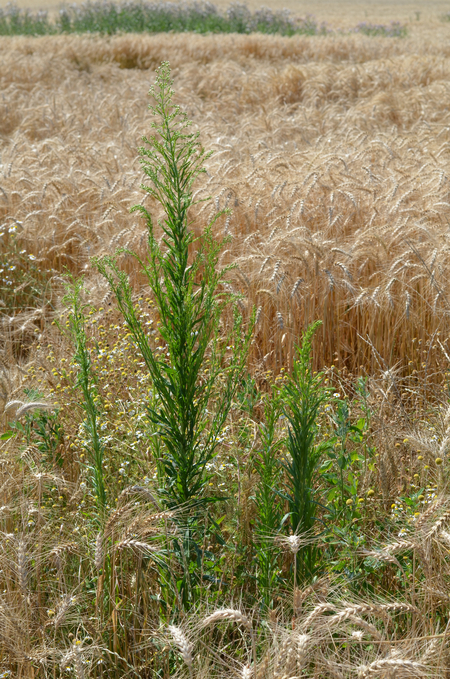Canadian professional herb
Appearance
The plant can occur as a summer, winter or biennial. In late spring, around mid-May, a single-shoot, erect shoot forms from the rosettes, branching at the top and reaching a height of 30 to 100 (-150) cm. The leaves of the adult plant are linear to lanceolate, up to 10 cm long and up to 2 cm wide and loosely toothed.
Distribution
The plant is undemanding, drought tolerant and requires light. In Austria, the Canadian professional weed is widespread and occurs in all provinces. The species mainly colonizes sites such as wasteland, rubble piles and railroad yards. In annual crop stands, Canada bindweed has hardly been observed so far, but observations show that the species occurs increasingly especially in soybean and sugar beet (e.g. in the Weinviertel) and occasionally in cereals. In viticulture and orchards, the plant is more common as a weed.
Economic importance
Significant yield losses can occur in fields. For example, studies have shown that soybean yields drop by up to 40% when Canada bindweed is left uncontrolled. In orchards and vineyards, yields can be reduced due to water and nutrient deprivation. In addition, the plants interfere with maintenance and harvesting operations as they grow into the tree crown and vine, respectively.
Prevention and control
- Turning base soil (fall). The germination capacity of seeds decreases significantly as the burial depth increases
- Tillage during the seedling and rosette stage.
- Selection and use of effective herbicides in crops(see list of plant protection products approved in Austria).
Last updated: 10.09.2024
automatically translated


